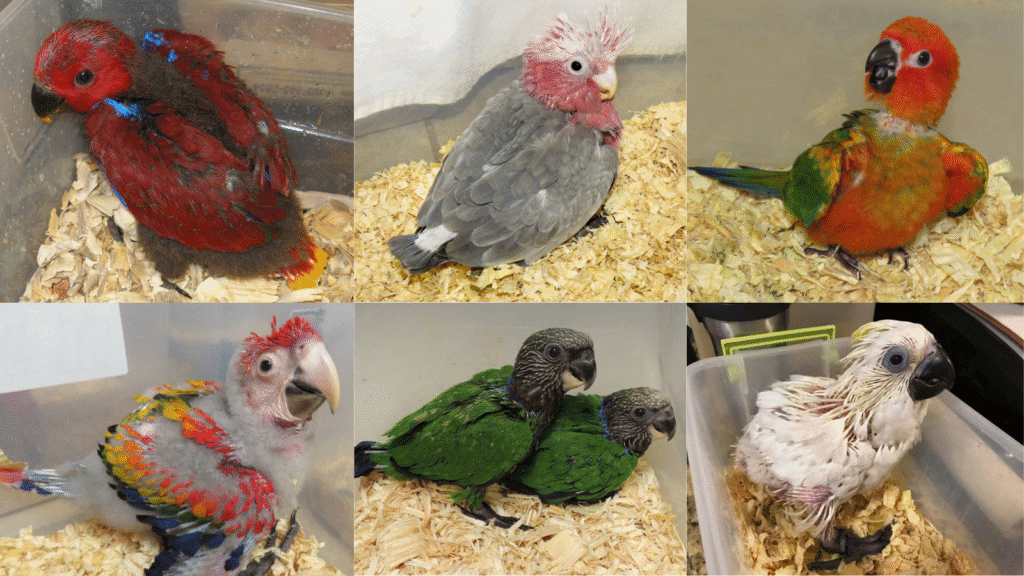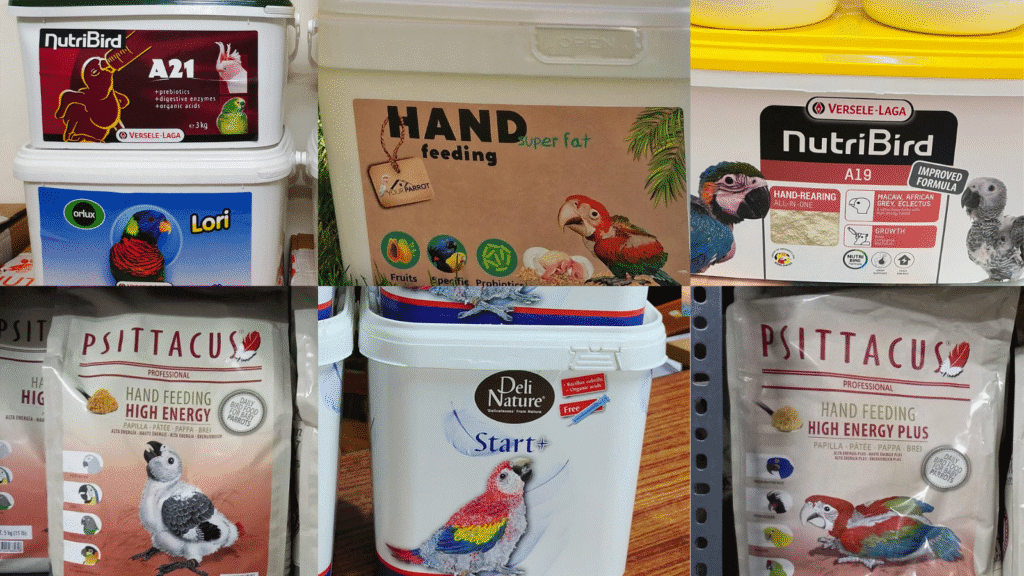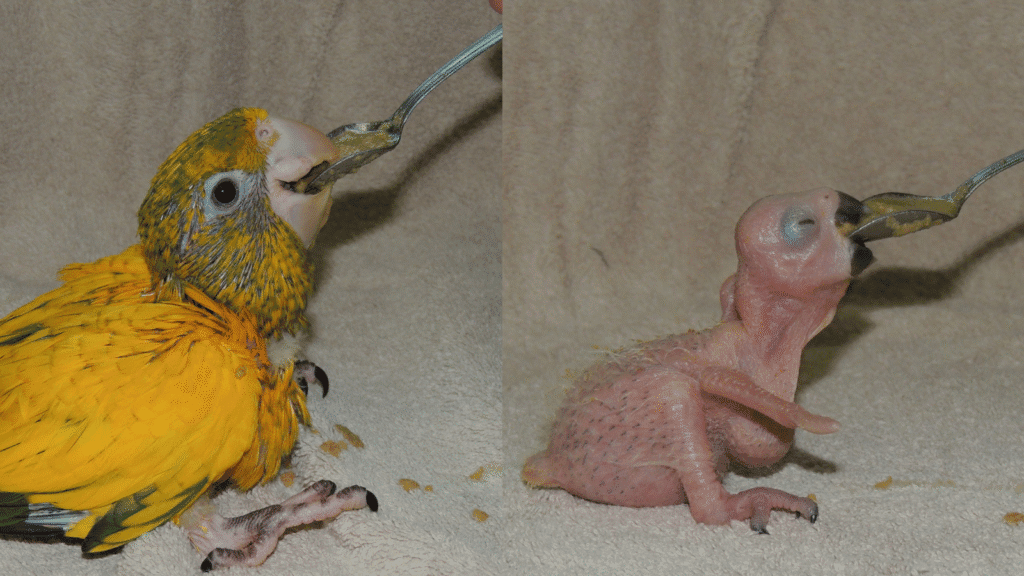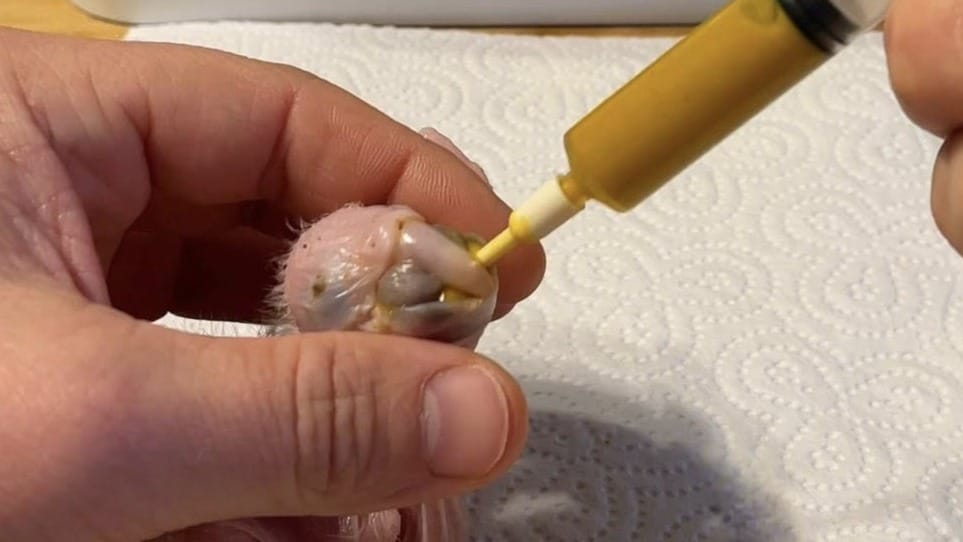Handfeeding Baby Birds: Are You Doing It Right? 7 Powerful Tips
Handfeeding baby birds represents one of the most rewarding yet challenging aspects of avian care. Whether you’re dealing with abandoned chicks or seeking to create exceptionally tame companions, mastering the art of handfeeding requires dedication, precision, and extensive knowledge. This comprehensive guide will equip you with essential handfeeding techniques that can mean the difference between success and heartbreak in your bird-rearing journey.
Table of Contents:

Understanding the Fundamentals of Handfeeding
Handfeeding involves manually providing nutrition to baby birds using specialized formulas and equipment. This process typically begins when chicks are 2-3 weeks old, though emergency situations may require earlier intervention. The practice demands unwavering commitment, as baby birds require feeding every 2-3 hours during their earliest stages of development.
The decision to pursue handfeeding shouldn’t be taken lightly. Unlike parent-raised birds, hand-fed chicks depend entirely on human caregivers for survival. This responsibility extends beyond mere feeding to encompass temperature regulation, hygiene maintenance, and health monitoring throughout the weaning process.
Essential Equipment for Successful Handfeeding
Selecting Premium Handfeeding Formulas
Quality handfeeding formulas serve as the foundation of successful chick rearing. Premium formulas contain essential ingredients like lactobacillus and digestive enzymes that support healthy development. When evaluating formulas, consider factors such as mixing ease, temperature retention, and nutritional completeness.
Handfeeding Tools and Utensils
Proper handfeeding equipment includes syringes, bent spoons, and specialized feeding instruments. Syringes offer precise control over formula delivery, while bent spoons can be beneficial for older chicks transitioning from syringe feeding. Each tool requires thorough sterilization between uses to prevent contamination.

Creating the Perfect Brooder Environment
Temperature Control Systems
Maintaining appropriate temperatures represents a critical aspect of handfeeding success. Young chicks require temperatures between 94-96°F during their first five days, gradually decreasing as they develop feathers and grow larger. Temperature fluctuations can lead to crop stasis, poor digestion, and increased susceptibility to infections.
A properly equipped brooder includes heating pads, thermometers positioned at chick level, and adequate ventilation. Pine shavings covered with paper towels provide comfortable bedding while facilitating easy cleanup and moisture absorption.
| Age of Chick | Degrees in Fahrenheit (°F) | Degrees in Celsius (°C) |
| 1–5 days | 94 – 96 °F | 34.4 – 35.6 °C |
| 6–9 days | 93 – 95 °F | 33.9 – 35.0 °C |
| 10–14 days | 91 – 93 °F | 32.8 – 33.9 °C |
| 15–21 days | 86 – 90 °F | 30.0 – 32.2 °C |
| 22–28 days | 81 – 85 °F | 27.2 – 29.4 °C |
| 29–35 days | 76 – 80 °F | 24.4 – 26.7 °C |
| 36 days to weaning | 70 – 75 °F | 21.1 – 23.9 °C |
Brooder Setup and Safety Considerations
Professional brooder setup involves multiple safety considerations beyond temperature control. Adequate ventilation prevents humidity buildup while maintaining warmth. Cover systems using plastic tank covers or wire grills with towels create secure environments while allowing air circulation.
The 7 Must-Know Handfeeding Tips
Tip 1: Master Proper Formula Preparation
Successful handfeeding begins with precise formula preparation. Always use sterile water or water boiled for ten minutes to eliminate potential pathogens. Mix formula in glass containers rather than plastic to prevent bacterial harboring in scratches. Prepare fresh batches for each feeding session, discarding any leftover formula to prevent contamination.
Formula consistency should be smooth and lump-free, mixed according to manufacturer specifications. Temperature control during preparation prevents crop burn while ensuring proper digestibility. Heat water first, then add to dry formula powder, stirring thoroughly to achieve uniform consistency.
Tip 2: Perfect Your Feeding Technique
Proper handfeeding technique requires steady hands and patient observation. Position the chick comfortably on a stable surface, inserting the syringe tip gently into the left side of the chick’s mouth (your right when facing the bird). Direct the syringe tip toward the right side of the chick’s mouth, delivering formula with slow, steady pressure.
Watch the crop fill gradually during feeding, ensuring you don’t overfill to the point where formula backs up into the neck area. The crop should appear full but not pendulous or over-expanded. Developing this visual assessment skill proves crucial for preventing overfeeding complications.
Tip 3: Establish Consistent Feeding Schedules
Handfeeding schedules vary significantly based on chick age and development stage. Newly hatched chicks require feeding every 2-3 hours, including overnight feedings. As chicks mature, feeding frequency decreases while portion sizes increase proportionally.
Consistency in timing helps establish healthy digestive rhythms while preventing crop emptying issues. Allow crops to empty completely at least once every 24 hours to prevent sour crop development and maintain optimal digestive function.
| Chick Age | Feedings per Day | Time Between Feedings | Notes |
| 0–5 days | 6–8 times | Every 2–3 hours (even at night) | Keep warm, small amounts |
| 6–10 days | 5–6 times | Every 3–4 hours | Slightly larger feeds |
| 11–14 days | 4–5 times | Every 4 hours | Crop should empty between feeds |
| 15–21 days | 3–4 times | Every 5 hours | May start preening, exploring |
| 22–28 days | 2–3 times | Every 6–8 hours | Introduce soft solid foods |
| 29–35 days | 2 times | Morning and evening | Start weaning foods |
| 36 days to weaning | 1–2 times | As needed | Let chick reduce formula naturally |
Tip 4: Maintain Impeccable Hygiene Standards
Handfeeding hygiene protocols cannot be overstated in importance. Baby birds lack developed immune systems, making them extremely vulnerable to bacterial and fungal infections. Always wash hands thoroughly with hot, soapy water and apply hand sanitizer before handling chicks or preparing formula.
Sterilize all feeding equipment after each use using avian veterinarian-recommended disinfectants. Some breeders utilize grapefruit seed extract or baby bottle sterilizers for non-toxic sanitization. Never reuse syringes between chicks without proper sterilization, as this practice can spread infections throughout your nursery.
Tip 5: Monitor Temperature Precisely
Temperature precision during handfeeding prevents numerous complications. Formula temperature should remain between 102-104°F during feeding to ensure proper crop drainage and prevent burns. Digital candy thermometers provide accurate readings, eliminating dangerous guesswork that can lead to crop burn or poor digestion.
Never rely on wrist testing or other subjective methods for temperature assessment. Even slight temperature variations can cause severe problems – formula just a few degrees too hot causes painful crop burns, while cooler temperatures prevent proper crop emptying and digestion.
Tip 6: Recognize and Prevent Common Problems
Understanding potential handfeeding complications enables early intervention and prevention. Crop burn results from overheated formula and can cause excruciating pain, tissue damage, and potentially fatal complications. Aspiration occurs when formula enters the respiratory system, leading to immediate suffocation risk or later respiratory infections.
Sour crop develops when food remains in the crop too long, fermenting and creating toxic conditions. This condition requires immediate veterinary intervention and can prove fatal if left untreated. Regular crop monitoring and proper feeding schedules prevent most cases.
Tip 7: Plan for Successful Weaning
Weaning represents the final phase of handfeeding, requiring careful observation and gradual transition to independent feeding. Begin introducing soft solid foods around 22-28 days while continuing handfeeding sessions. Provide variety in food offerings, including pellets, seeds, and fresh foods appropriate for the species.
During fledgling periods, chicks may reduce formula intake significantly as they “diet” to achieve flight-ready body condition. This natural process shouldn’t be mistaken for successful weaning. Maintain feeding schedules while encouraging exploration of solid foods until chicks demonstrate consistent independent eating.
Advanced Handfeeding Considerations
Species-Specific Requirements
Different bird species present unique handfeeding challenges and requirements. Cockatiel handfeeding, for instance, involves specific temperature ranges and feeding frequencies that differ from larger parrot species. Understanding species-specific needs ensures optimal development and health outcomes.
Health Monitoring During Handfeeding
Regular weight monitoring using gram scales with one-gram increments provides crucial health indicators during handfeeding. Consistent weight gain indicates proper nutrition and development, while weight loss or stagnation may signal underlying problems requiring veterinary attention.

Visual health assessments include monitoring crop function, elimination patterns, activity levels, and feather development. Changes in any of these areas warrant immediate attention and possible veterinary consultation.
Troubleshooting Common Handfeeding Issues
Crop-Related Problems
Crop stasis represents one of the most serious Manual feedingcomplications, involving complete digestive shutdown. This condition requires immediate veterinary intervention, including crop flushing, antibiotic treatment, and supportive care. Prevention through proper temperature control and feeding schedules proves far superior to treatment.
Crop impactions can result from inappropriate bedding materials ingested by curious chicks. Avoid wood shavings, corn cob bedding, and other indigestible materials that can cause fatal blockages if consumed.
Respiratory Complications
Aspergillosis poses significant risks in Manual feeding environments, particularly where organic bedding materials create mold growth conditions. This fungal disease affects respiratory systems and eyes, proving especially dangerous for immune-compromised baby birds.
Maintaining clean, dry brooder environments with appropriate bedding materials prevents most fungal complications. Paper towels over pine shavings provide safe, absorbent surfaces while eliminating mold growth opportunities.
Bacterial and Fungal Infections
Candidiasis represents a common yeast infection affecting hand-fed chicks due to their undeveloped immune systems. Proper hygiene protocols, including hand washing, equipment sterilization, and fresh formula preparation, prevent most cases.
Bordatella, known as “lockjaw,” prevents chicks from opening their beaks for feeding. This devastating condition has no effective treatment and often results in humane euthanasia recommendations due to the associated pain and suffering.
Creating Long-Term Success in Handfeeding
Building Experience Gradually
Successful Manual feeding requires hands-on experience that develops over time. Beginning with guidance from experienced breeders or avian veterinarians provides invaluable practical knowledge that videos and articles cannot fully convey. The rapid movements and impatient nature of hungry chicks demand practiced responses and confident handling.
Emergency Preparedness
Maintaining relationships with qualified avian veterinarians proves essential for Manual feeding success. Emergency situations can develop rapidly, requiring immediate professional intervention. Having emergency contacts and transportation plans prepared before beginning Manual feeding eliminates crucial delays during crisis situations.
The Rewards of Dedicated Handfeeding
Despite the challenges and time commitments involved, Manual feeding produces exceptionally tame, well-socialized companion birds. The intimate bonding process creates strong human-bird relationships that enhance the overall pet ownership experience. However, these benefits come only through dedicated adherence to proper protocols and unwavering commitment to chick welfare.
Conclusion
Handfeeding baby birds demands extensive preparation, unwavering dedication, and meticulous attention to detail. Success requires mastering formula preparation, maintaining proper temperatures, establishing consistent schedules, and implementing rigorous hygiene protocols. While challenging, proper handfeeding techniques produce healthy, well-adjusted birds that form strong bonds with their human caregivers.
Remember that handfeeding represents a significant responsibility that extends far beyond simple feeding. Temperature control, health monitoring, and emergency preparedness all contribute to successful outcomes. When undertaken with proper knowledge and commitment, handfeeding can be one of the most rewarding aspects of avian care.
F A Q
When should I start handfeeding baby birds?
Begin handfeeding when chicks are 2-3 weeks old, unless emergency situations require earlier intervention. This timing allows chicks to receive essential natural immunities from their parents while still accepting hand feeding readily.
How often do baby birds need feeding during handfeeding?
Feeding frequency depends on age – newly hatched chicks require feeding every 2-3 hours including overnight, while older chicks need feeding 3-4 times daily. Always allow crops to empty completely at least once every 24 hours.
What temperature should handfeeding formula be?
Maintain formula temperature between 102-104°F during feeding. Use digital thermometers for accuracy, as temperatures even slightly higher can cause crop burn, while cooler temperatures prevent proper digestion.
How do I know when handfeeding chicks are ready to wean?
Weaning readiness varies by species but typically occurs when chicks consistently eat solid foods independently, maintain stable weight without formula, and show reduced interest in hand feeding. This process usually takes 5-10 weeks depending on the species.
Did you enjoy this article?
Help other pet lovers benefit too — Share it on social media! 🐾💚


Leave a Reply